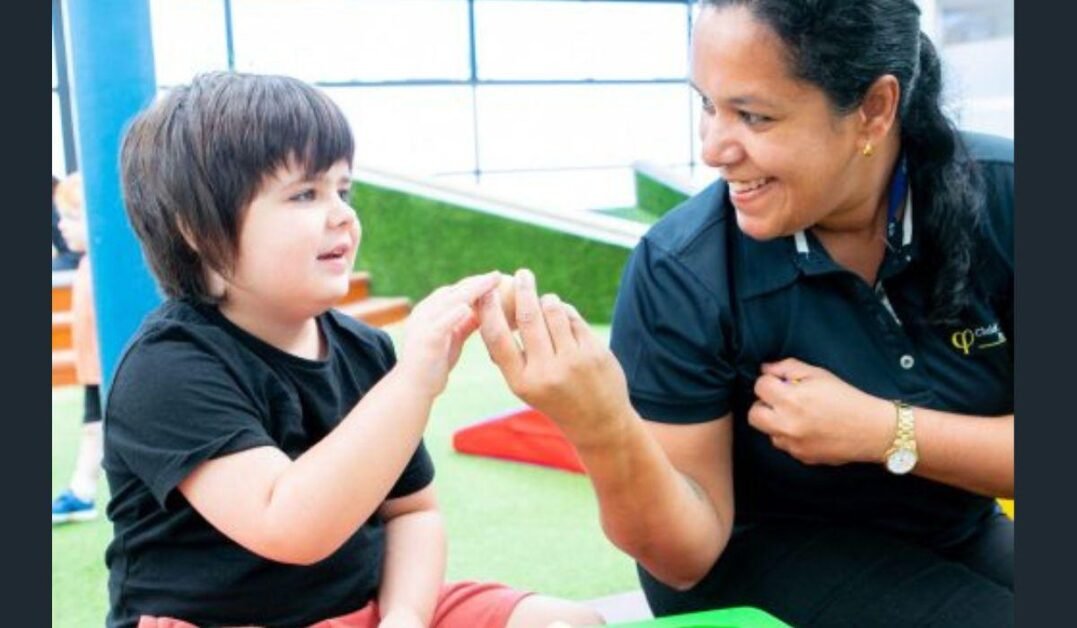The Early Start Denver Model (ESDM) is a highly effective early intervention approach designed for young children with autism. Rooted in developmental and behavioral principles, the Early Start Denver Model focuses on improving cognitive, social, and communication skills through play-based activities that are both engaging and educational. If you’re considering the ESDM for your child, this guide will walk you through the steps to get started.
What is the Early Start Denver Model?
Before diving into the steps to begin, it’s important to understand what the Early Start Denver Model is and how it can benefit your child. The ESDM is an evidence-based intervention for children aged 12 to 48 months who have been diagnosed with autism or show signs of developmental delays. The model integrates applied behavior analysis (ABA) techniques with developmental approaches, focusing on building a child’s skills in a naturalistic and engaging way.

Key Features of the Early Start Denver Model:
- Play-Based Learning: The ESDM uses play as a primary method for teaching new skills.
- Natural Environment: Sessions often take place in the child’s natural environment, such as at home or in a preschool setting.
- Family Involvement: Parents and caregivers are integral to the success of the ESDM, as they are trained to implement strategies throughout daily routines.
- Individualized Approach: Each child’s program is tailored to their specific needs and developmental level.
Step:1 Assess Your Child’s Needs
The first step in getting started with the Early Start Denver Model is to assess your child’s current developmental level and specific needs. This will help you determine whether the ESDM is the right fit for your child and what areas of development should be prioritized.
Seek a Professional Evaluation
- Pediatrician Consultation: Start by discussing your concerns with your child’s pediatrician. They can provide referrals to specialists who can conduct a comprehensive developmental evaluation.
- Developmental Psychologist: A developmental psychologist can assess your child’s cognitive, social, and communication skills to determine if they would benefit from the ESDM.
- Speech and Language Therapist: If your child has specific language delays, a speech and language therapist can assess their communication abilities.

Step 2: Find a Qualified ESDM Therapist
Once you’ve determined that the Early Start Denver Model is appropriate for your child, the next step is to find a qualified therapist. The success of the ESDM largely depends on the expertise and training of the therapist working with your child.
Where to Look for a Qualified ESDM Therapist
- Autism Service Providers: Many autism service providers offer ESDM therapy as part of their early intervention services. Look for providers in your area that specialize in the ESDM.
- ESDM Certified Therapists: Ensure that the therapist is certified in the Early Start Denver Model. Certification ensures that the therapist has completed the necessary training and is proficient in the model’s techniques.
- Referral Networks: Ask your child’s pediatrician or developmental psychologist for recommendations. They may have connections with certified ESDM therapists in your area.
What to Ask When Choosing a Therapist
- Experience: Ask about the therapist’s experience working with children who have autism, specifically using the ESDM.
- Session Structure: Inquire about how sessions are structured, including the frequency and duration of each session.
- Parental Involvement: Confirm that the therapist encourages and supports parental involvement in the therapy process.

Step 3: Develop an Individualized ESDM Program
Once you’ve selected a qualified therapist, the next step is to develop an individualized program tailored to your child’s unique needs. This program will guide the therapy sessions and set measurable goals for your child’s development.
Components of an Individualized ESDM Program
- Assessment: The therapist will conduct an initial assessment to establish your child’s current developmental level across various domains, such as communication, social skills, and motor abilities.
- Goal Setting: Based on the assessment, the therapist will work with you to set specific, measurable, and achievable goals for your child.
- Activity Planning: The early intervention Autism programs will include a variety of play-based activities designed to help your child reach their goals. These activities are integrated into your child’s daily routine to reinforce learning in a natural context.
- Progress Monitoring: Regular assessments will be conducted to monitor your child’s progress and make adjustments to the program as needed.
Step 4: Engage in Ongoing Training and Support
Parental involvement is a cornerstone of the Early Start Denver Model. As a parent, you play a crucial role in reinforcing the skills your child learns during therapy sessions.
Parental Training
- Attend Training Sessions: Many ESDM therapists offer training sessions for parents to help them understand the model and how to apply its principles at home.
- Practice at Home: Use the strategies and techniques you learn during training to support your child’s development in everyday activities, such as mealtime, playtime, and bedtime.
- Regular Communication: Maintain open communication with your child’s therapist to stay informed about your child’s progress and any adjustments needed in the therapy plan.
Support Networks
- Parent Support Groups: Join local or online support groups for parents of children with autism. These groups can provide valuable advice, emotional support, and resources.
- Ongoing Education: Continue learning about the ESDM and other early intervention approaches. Staying informed will help you advocate for your child and make informed decisions about their care.

Step 5: Monitor Progress and Adjust as Needed
The final step in implementing the Early Start Denver Model is to continuously monitor your child’s progress and adjust the program as needed. Early intervention is a dynamic process, and your child’s needs may change over time.
Regular Assessments
- Therapist Evaluations: Schedule regular evaluations with your child’s therapist to assess their progress and identify areas that may require additional focus.
- Parent Observations: Keep a journal of your child’s behavior and development at home. Share these observations with the therapist to provide a comprehensive view of your child’s progress.
- Goal Revisions: As your child meets their developmental goals, work with the therapist to set new ones that continue to challenge and support their growth.
Conclusion
Getting started with the Early Start Denver Model for your child involves careful planning, collaboration with professionals, and active parental involvement. By following these steps, you can ensure that your child receives the best possible start in their early development journey. Remember, the key to success with the ESDM is consistency, patience, and a commitment to supporting your child’s unique needs. With the right approach, the ESDM can make a significant positive impact on your child’s development and overall quality of life.




Mostbet to zaufana platforma dla miłośników zakładów sportowych | Mostbet pl to legalna strona z certyfikatem i ochroną danych | Mostbet rejestracja to pierwszy krok do emocjonującej rozgrywki mostbet online pl
Сайт предлагает кассовые чеки, которые принимают налоговые. | Подходит для отчётности перед работодателем или ИП. | Один из лучших сервисов по продаже чеков. | Рекомендую, если не хотите лишних проблем. | Безопасная оплата, всё официально. | Чеки можно использовать для компенсации расходов. | Чеки подходят под любые виды деятельности. | Легко оформить на сайте — всё интуитивно. | Работают и по предоплате, и по факту. | Доверяю этому сервису не первый раз. купить чеки для отчетности в москве.
2 iu hgh bodybuilding
References:
hgh bodybuilding dose (escatter11.fullerton.edu)
hgh injections side effects
References:
hgh bodybuilding kaufen – https://www.google.co.vi/url?q=https://wehrle.de/wp-content/pgs/hgh_kaufen_2.html –
hgh dosage for injury recovery
References:
Hgh vs tren
body building with steroids
References:
Is Winstrol Illegal (Weshareinterest.Com)